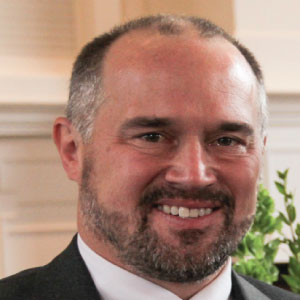
“Mountain God”
by the Reverend Doctor Peter W. Allen
Hingham Congregational Church, United Church of Christ
Hingham, Massachusetts
February 26, 2017
Psalm 99
Like many of you, since I was very young, I have sought spiritual comfort and inspiration in the hills. Whether climbing the craggy peaks of the White Mountains in New Hampshire or the smooth-topped Green Mountains of Vermont… snowshoeing in the majestic snow-covered Cascades of Washington State or walking the modest mounds of my home state of Connecticut (which can hardly be called mountains at all), I’ve hiked uphill, breathing in the fresh air, sometimes chatting with friends and family, other times making my way upward in silence, alone.
Far from home, in the Southern Uplands of Scotland or the Sierra Madre of Mexico, I’ve contemplated the meaning and direction of my life. No matter where I happen to be, if there are mountains there, they always make me think of, long for, and offer praise to God.
I know that many of you feel the same way – and that this is not a new idea.
Many Native American tribes have passed down through the generations stories of gods or other mythological creatures who live in the mountains.
The Penobscots believed that the god, Pamola, lived on top of Mount Katahdin, the tallest mountain in Maine. Pamola, who had the head of a moose, the body of a man, and the wings and talons of an eagle, was the god of thunder and was said to dislike humans. Because of this, climbing Katahdin was taboo amongst the Penobscots. I am really glad I didn’t encounter Pamola when I climbed Katahdin. That would have put a damper on the hike to say the least.
For the ancient Greeks, Mount Olympus, the highest mountain in Greece, was where Zeus, Hera, Aphrodite, Apollo, Ares, and other gods had their home.
Mount Etna, in Italy was thought to have been the home of Vulcan, the Roman god of fire. Mount Kailash, in Tibet, is believed to be the abode of the Hindu deity, Shiva.
In the Hebrew Bible, Moses goes up on the mountain and not only encounters God there, but receives what are considered by Jewish and Christian people to be the basic instructions for human living, the Ten Commandments.
In one story, Moses sees God on the mountain, but only God’s backside. To have seen the face of God would have meant certain death. In another encounter, Moses is left with a sunburn on his face from being so close to God. As in the legend of Pamola, you don’t want to mess with these mountain gods.
In contrast, most of us recognize the words of Psalm 121: I lift up my eyes to the hills – from where will my help come? My help comes from the Lord, who made heaven and earth. The God of the hills is a loving, reassuring God.
In the New Testament, in the Gospel of Matthew, Jesus goes up on a mountain and begins to speak to his disciples and to a large crowd. What follows is called the Sermon on the Mount and contains some of Jesus’ most important teachings. In those verses, Jesus calls his followers to a higher righteousness, higher even than the righteousness of the Pharisees, who had extremely strict standards.
Last week, Sara reflected on the story of the Transfiguration, when Jesus and his inner circle of followers hear the voice of God on top of a mountain. God confirms Jesus as the Son of God and commands the disciples to listen to him.
Why have human beings always thought of mountaintops as sacred places, as places where the holy can be encountered, places of spiritual power, whether it’s with trepidation or with exultant joy?
In the ancient world, people considered the physical and spiritual universes to be one and the same and they imagined this universe to be something like a layer cake. The bottom layer was the place of the dead or something like hell. The middle layer was the earth as we experience it. The top layer was the home of the gods, or the one God, and perhaps other holy creatures, like angels.
So it makes sense, in that ancient layer cake model of the universe, that they considered mountain peaks to be closer to heaven.
Nowadays, even though we don’t think of the universe in the same way that our ancestors did, we still look to the hills for guidance, for help, and for hope. Being up high and looking out over the landscape gives us the chance to step back from our everyday cares and responsibilities and really think about the big picture of our world and of our own lives. The process of climbing also reminds us that anything beautiful, anything worth doing is challenging and requires preparation, patience, and effort.
In Martin Luther King’s most famous, most appreciated speech, he quotes the anthem, My Country ‘Tis of Thee. In that song (which by the way, I think should be our national anthem), freedom rings out from every mountainside.
There is no mistaking the image he is suggesting, that freedom will ring out from the mountains of our nation, even from the mountains and hills of the Deep South, which means freedom ringing out from the heart of God, the God of justice and of hope.
And yet…
I know that many of you have encountered God in what we consider to be “low” places — while feeding the hungry in Boston, while serving the poor in Africa, while doing what you could to help folks who live on a reservation. I know that some of you have been keenly aware of God’s presence in the dark night of your own suffering – in the depths of addiction or another illness or some life crisis. So God can be seen and heard and felt in low places, too.
And even though it doesn’t sound very romantic or exciting, we can also encounter the Divine in the very flat, very everyday, very mundane places of our lives. Waking up with the person we love the best and whispering a prayer of thanks. Watching our kids grow up and praying for them as they figure out how to navigate life’s challenges. Going to work and being determined to be servants of God through the way we conduct our business. Looking out the window of our cars and seeing the simple beauty of a stand of birch or a pond ringed with pine or an amazing sunset and thinking, Wow, God is, and God is great.
The truth that I believe is that God is everywhere. God is in the Blue Hills. God is in the Berkshires. God is in the Himalayas. God is on Cadillac Mountain in Acadia National Park in Maine, which is the first place you can see the sunrise on the Eastern Seaboard.
And God is in Death Valley in California and in the Gobi desert in China. God is in Moscow. God is in the supposedly faithless cities of Western Europe. God is in Haiti, a place of much suffering and much faith. God is in the patrician communities of New England and in the mean streets of Chicago and Detroit and New York and LA. And God is in the quiet farming communities of Kansas and Ohio and in the incredibly boring suburbs of every state of our nation.
God is even in Washington DC. Believe it or not!
And God is within you. Believe it. As Jen told the kids this morning, God is within you, shining a light out into a world that is in need of light.
So, please, whether or not you are up for climbing a 4,000 footer with me this spring… Whether you most often find God here, in this sanctuary — or in other places, high places, low places, in between places… Know that God is with you, is within you, and that God will keep your eyes looking for the good in the world, will keep your feet moving forward toward places of hope, and will keep your hands busy in the work of helping and of healing.
Thanks be to God!
